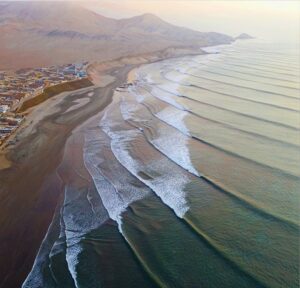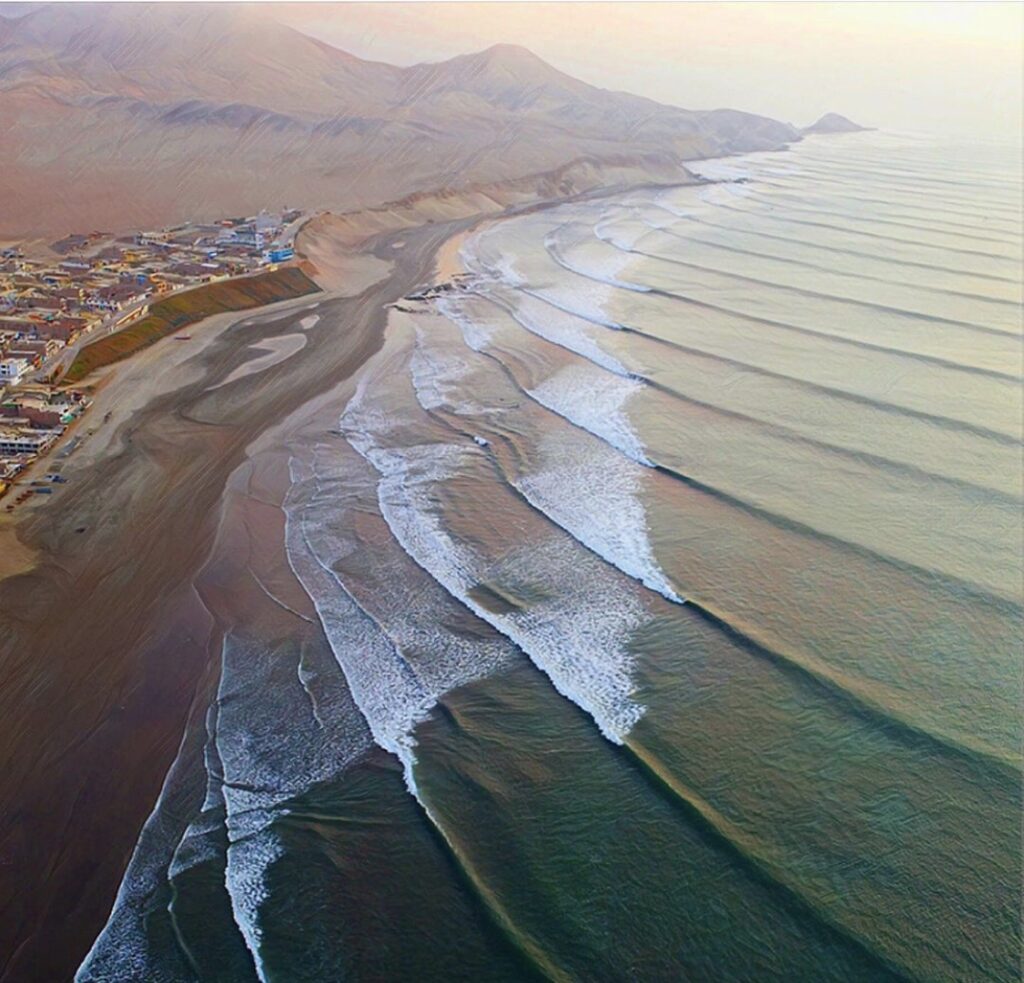- Sunrise: 7:00 AM (for comparison’s sake, the sun comes up around 5:30 AM on June 20th)
- Sunset: 6:06 PM (for comparison’s sake, the sun sets around 8:00 PM on the June 20th)
- 6’ at breakfast
- 0’ around 2pm
- 3′ at sunset
For a more detailed THE Surf Report, check out http://northcountysurf.blogspot.com/.
When a huge 6 mile wide asteroid slammed into the surface of the Earth about 66 million years ago, it left life on the planet in ruins. The impact caused the last mass extinction event, spelling the end for the dinosaurs. Scientists have long debated exactly how the impact ended the reign of the terrible lizards, with many theories pointing to a disruption of the Earth’s climate. New evidence suggests that this is, at least partially, true and that the massive collision caused rapid acidification of the oceans, driving ecological collapse.
The study, published in the journal Proceedings of the National Academy of Sciences on Monday, examined the Geulhemmerberg Cave in the Netherlands, the Brazos River in Texas, deep-sea drill cores and Owl Creek in Mississippi to paint a picture of the immediate aftermath of the Chicxulub asteroid impact. The research team suggests that before the asteroid hit the Earth, the oceans were not increasing in acidity.
But afterward, there was a rapid decrease in pH, making the oceans significantly more acidic. At the Geulhemmerberg cave, researchers found the fossilized remains of tiny plankton known as foraminifera.
“In this cave, an especially thick layer of clay from the immediate aftermath of the impact accumulated, which is really quite rare,” said Michael Henehan, a geoscientist and first author of the study, in a press release. “Because so much sediment was laid down there at once, it meant we could extract enough fossils to analyze, and we were able to capture the transition.”
The fossils were dated to the asteroid impact and the team showed the event was so potent it prevented the plankton from building calcium carbonate shells. This, they reason, would have caused the plankton to die out and the web of life to deteriorate. Notably, life in the ocean’s upper layers would die out, disrupting the carbon cycle. According to the data, it was several million years before bouncing back.
In contrast to the new study, scientists also believe volcanism may have contributed to the downfall of the great lizards. Earlier this year, two studies in Science showed increased levels of volcanic activity from the Deccan Traps, massive volcanoes that started erupting around 400,000 years before the Chicxulub impact and could have expelled enough lava to circle the Earth.


